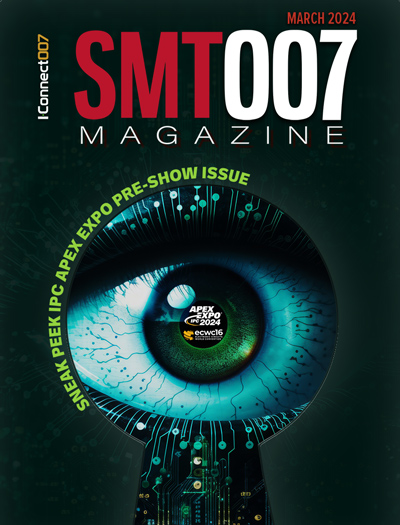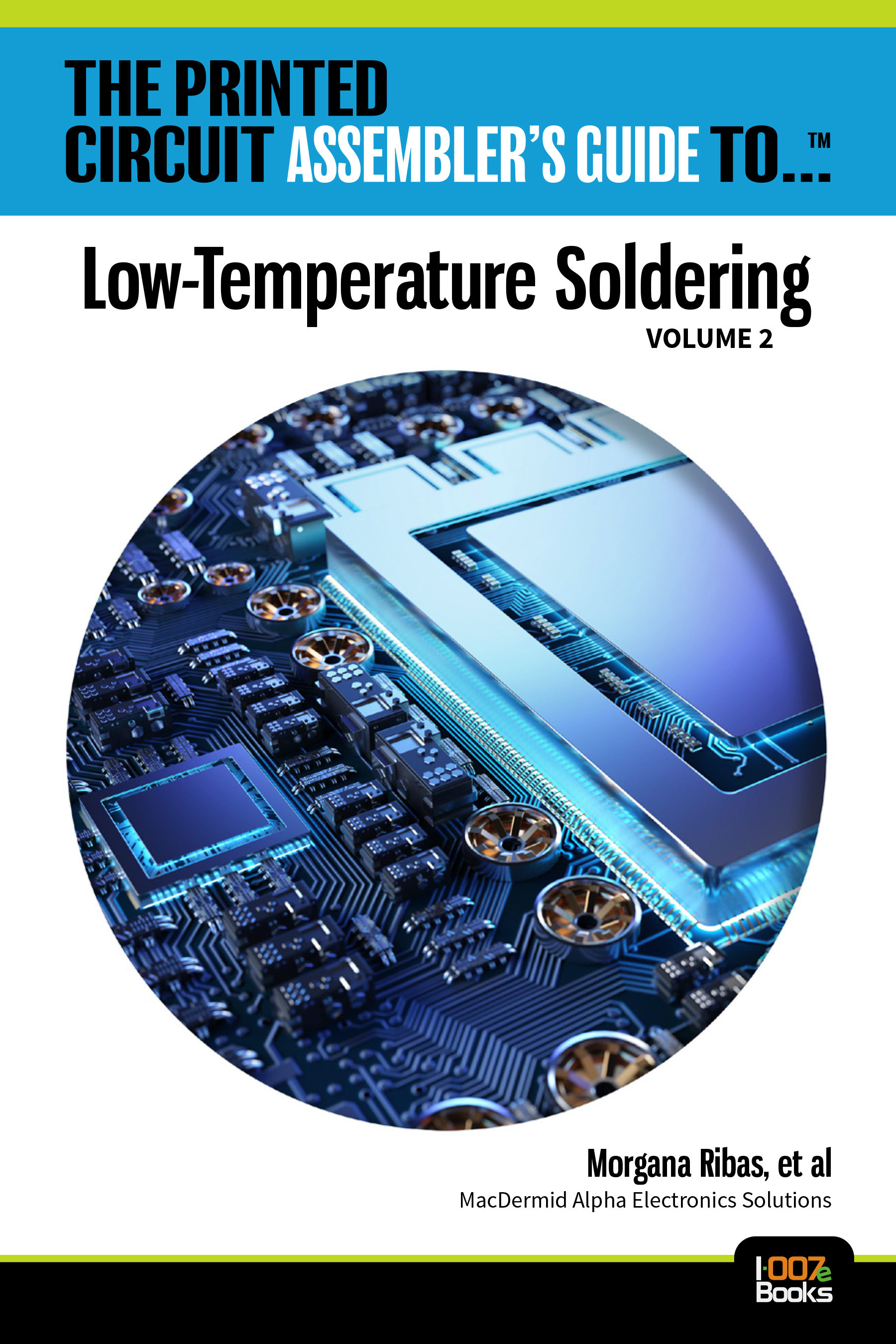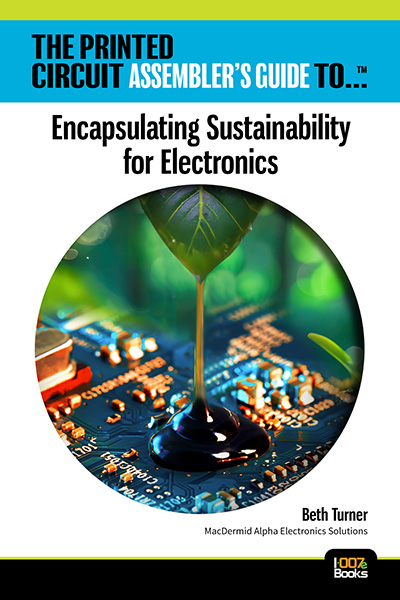-

- News
- Books
Featured Books
- smt007 Magazine
Latest Issues
Current Issue
Box Build
One trend is to add box build and final assembly to your product offering. In this issue, we explore the opportunities and risks of adding system assembly to your service portfolio.

IPC APEX EXPO 2024 Pre-show
This month’s issue devotes its pages to a comprehensive preview of the IPC APEX EXPO 2024 event. Whether your role is technical or business, if you're new-to-the-industry or seasoned veteran, you'll find value throughout this program.

Boost Your Sales
Every part of your business can be evaluated as a process, including your sales funnel. Optimizing your selling process requires a coordinated effort between marketing and sales. In this issue, industry experts in marketing and sales offer their best advice on how to boost your sales efforts.
- Articles
- Columns
Search Console
- Links
- Events
||| MENU - smt007 Magazine
The Theory Behind Tin Whisker Phenomena, Part 4
September 21, 2016 | Dr. Jennie S. Hwang, H-Technologies GroupEstimated reading time: 2 minutes
In this fourth installment of the series, we will continue discussing the likely key processes engaged in tin whisker growth. These key processes include:
- Grain boundary movement and grain growth
- Energy dynamic of free surface
- Role of recrystallization
- Solubility and grain growth in response to external temperature
- Lattice vs. grain boundary diffusion
- Reaction and dynamic of intermetallic compounds
- Crystal structure and defects
In Parts 2 and 3, we have discussed the first five processes: grain boundary movement and grain growth; energy dynamic of free surface; solubility and grain growth in response to external temperature; and the role of recrystallization. Now, we will outline the next two processes—lattice vs. grain boundary diffusion, and reaction and dynamic of intermetallic compounds.
Lattice vs. Grain Boundary Diffusion
Diffusion is a key part of crystal growth process; and whisker phenomenon is primarily a diffusion-controlled process. Since diffusion is a necessary path to grow whiskers, slowing the rate of diffusion of tin intra-granularly or along grain boundaries should be an effective approach to slow down the whisker growth.
The actual monitoring or controlling the processes between the lattice diffusion and grain boundary diffusion is a complex challenge. Nonetheless, understanding the main factors between these two diffusion processes will help navigate the practical solutions.
Diffusion through tin matrix is expected to be impeded by alloying element. One vivid example is SnPb. This binary system comprises two phases—a Pb-rich phase and Sn-rich phase. The fact that SnPb alloy alleviates tin whisker propensity largely attributes to that Pb slows the diffusion of Sn in the matrix and allows for rapid stress relaxation, which in turn, reduces or prevents continuing whisker growth.
Diffusion rates are also grain boundary (g.b.) sensitive; the greater the number of g.b., the faster the diffusion rate is. For a grain boundary rate-determining process, the greater the number of g.b. could lead to a faster rate of whisker growth. Increasing the grain size of the tin plating will reduce the number of grain boundaries, slowing the diffusion. Intermetallic compounds (IMCs) with “suitable” sizes tend to form preferentially along grain boundaries. Fewer grain boundaries offer fewer sites for non-uniform IMC growth, resulting in the reduced stress in the system.
Additionally, the diffusion rate varies with the crystallographic orientation. The interstitial diffusion of Cu/Ni along the c-axis of tin grains is much faster than along a,b-axes. Accordingly, grain orientation can affect diffusion rates in tin matrix. Controlling the grain orientation can alter the rate of diffusion. However, tin's anisotropic properties can be reduced by refining its microstructure.
Overall, increasing the grain size of the plating or controlling the grain orientation can slow the rate of diffusion.
Both lattice diffusion and grain boundary diffusion are participants in tin whisker growth. The relative rate of lattice diffusion and grain boundary diffusion varies with temperature, which plays a role to the actual mechanism of the process, as well as to the growth of whisker. However, as the temperature rises, in the case of tin to above 75°C, the lattice and grain boundary diffusion rates start to converge to a similar rate.
The relative diffusion rates between lattice and grain boundary in relation to the size, morphology, crystal lattice structure and external conditions (e.g., temperature) are more intricate than the first glance—indeed, a complex challenge to "conquer and control!"
To read this entire article, which appeared in the September 2016 issue of SMT Magazine, click here.
Suggested Items
A Look at the Theory Behind Tin Whisker Phenomena, Part 3
11/05/2015 | Dr. Jennie S. Hwang, H-Technologies GroupThe third installation in Jennie Hwang's five-part series on tin whisker phenomena continues the discussion on key processes engaged in tin whisker growth. She discusses the energy of free surface, recrystallization, and the impact of solubility and external temperature on grain growth.
Tin Whisker Self-Mitigation in Surface Mount Components Attached with Leaded Solder Alloys
10/06/2015 | By Thomas Hester and David Pinsky, Raytheon CompanyThis article provides the findings of a lengthy project of soldering electronic components with pure tin finishes with lead-containing solder for the attachment. The object of the project was to determine the conditions under which sufficient alloying of the pure tin finish by lead in the solder is achieved for the purpose of whisker suppression.
The Theory Behind Tin Whisker Phenomena, Part 2
07/14/2015 | Dr. Jennie S. Hwang, H-Technologies GroupIn the second part of this article series, Dr. Jennie Hwang writes that a plausible theory of tin whisker growth can be postulated through deliberating the combination and confluence of several key metallurgical processes.
Minimizing the Risk of Tin Whisker Formation in Lead-Free Assemblies
02/24/2015 | Mitch Holtzer, AlphaAlthough tin whiskers are very small crystalline fibers, they have reportedly caused multiple NASA satellites to become inoperable, automotive accelerator pedals to become unusable and a nuclear reactor to malfunction. The risk, however, can be minimized by specifying material sets that are less likely to produce tin whiskers.


